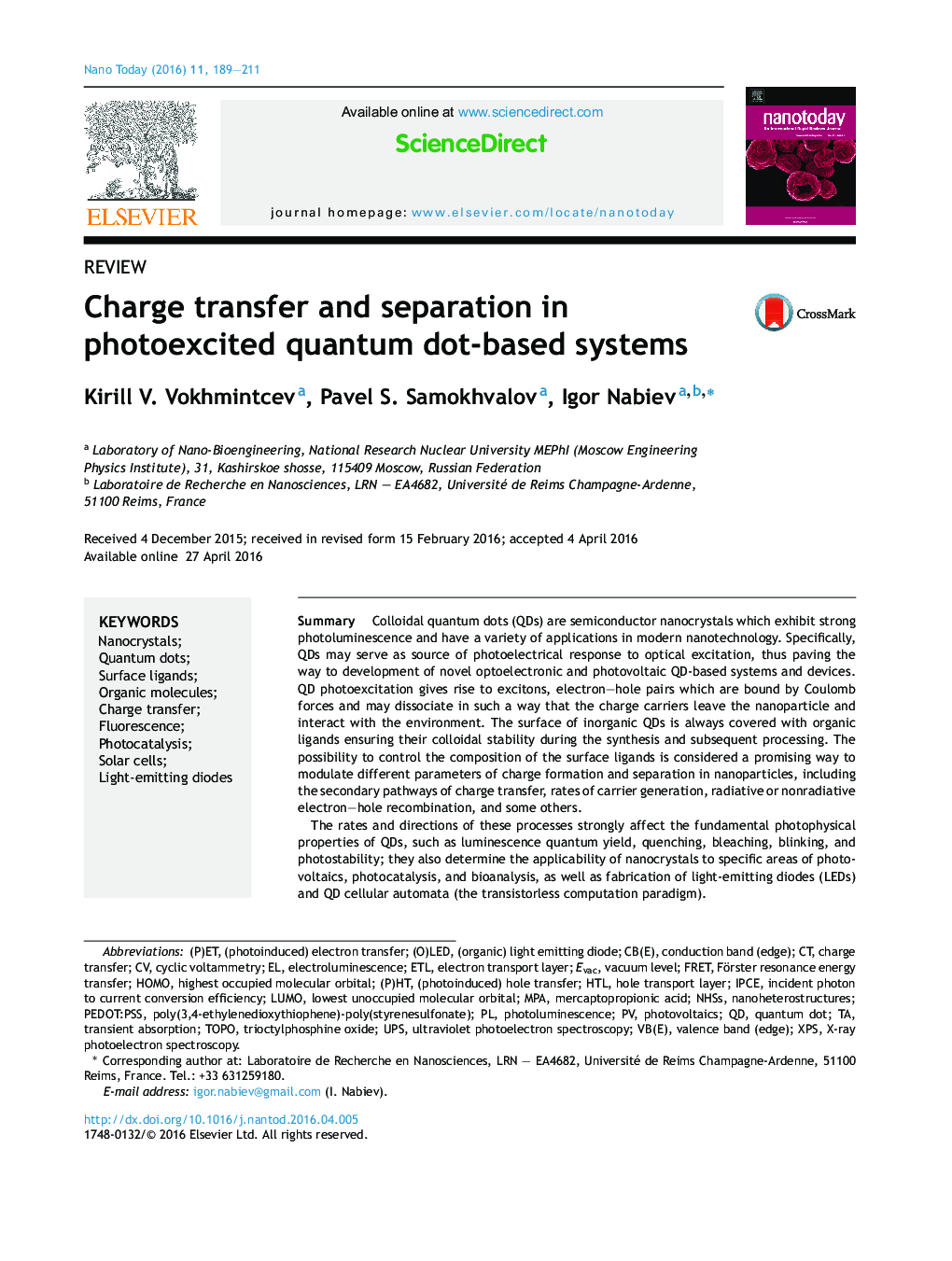| کد مقاله | کد نشریه | سال انتشار | مقاله انگلیسی | نسخه تمام متن |
|---|---|---|---|---|
| 32046 | 44892 | 2016 | 23 صفحه PDF | دانلود رایگان |
• QDs are used in photovoltaics, catalysis, bioanalysis, LEDs and cellular automata.
• Basics of charge separation and transfer in QD-based systems are analyzed.
• Effects of QD surface ligands on charge carrier transfer/separation are described.
• Composition of QD surface ligands governs charge carrier dynamics in nanoparticles.
• Prospects for advanced photovoltaic and optoelectronic QD devices are outlined.
SummaryColloidal quantum dots (QDs) are semiconductor nanocrystals which exhibit strong photoluminescence and have a variety of applications in modern nanotechnology. Specifically, QDs may serve as source of photoelectrical response to optical excitation, thus paving the way to development of novel optoelectronic and photovoltaic QD-based systems and devices. QD photoexcitation gives rise to excitons, electron–hole pairs which are bound by Coulomb forces and may dissociate in such a way that the charge carriers leave the nanoparticle and interact with the environment. The surface of inorganic QDs is always covered with organic ligands ensuring their colloidal stability during the synthesis and subsequent processing. The possibility to control the composition of the surface ligands is considered a promising way to modulate different parameters of charge formation and separation in nanoparticles, including the secondary pathways of charge transfer, rates of carrier generation, radiative or nonradiative electron–hole recombination, and some others.The rates and directions of these processes strongly affect the fundamental photophysical properties of QDs, such as luminescence quantum yield, quenching, bleaching, blinking, and photostability; they also determine the applicability of nanocrystals to specific areas of photovoltaics, photocatalysis, and bioanalysis, as well as fabrication of light-emitting diodes (LEDs) and QD cellular automata (the transistorless computation paradigm).In this review we analyze recent advances in controlled charge generation, separation, and transfer in QD-based organic and inorganic systems, with a special emphasis on the role of the surface-stabilizing ligands in the transfer and separation of photogenerated charge carriers. The prospects of development of advanced QD-based photovoltaic and optoelectronic devices employing carefully selected surface ligands that improve the nanocrystal photophysical properties are analyzed in the “Summary and outlook” section.
Figure optionsDownload high-quality image (121 K)Download as PowerPoint slide
Journal: - Volume 11, Issue 2, April 2016, Pages 189–211
